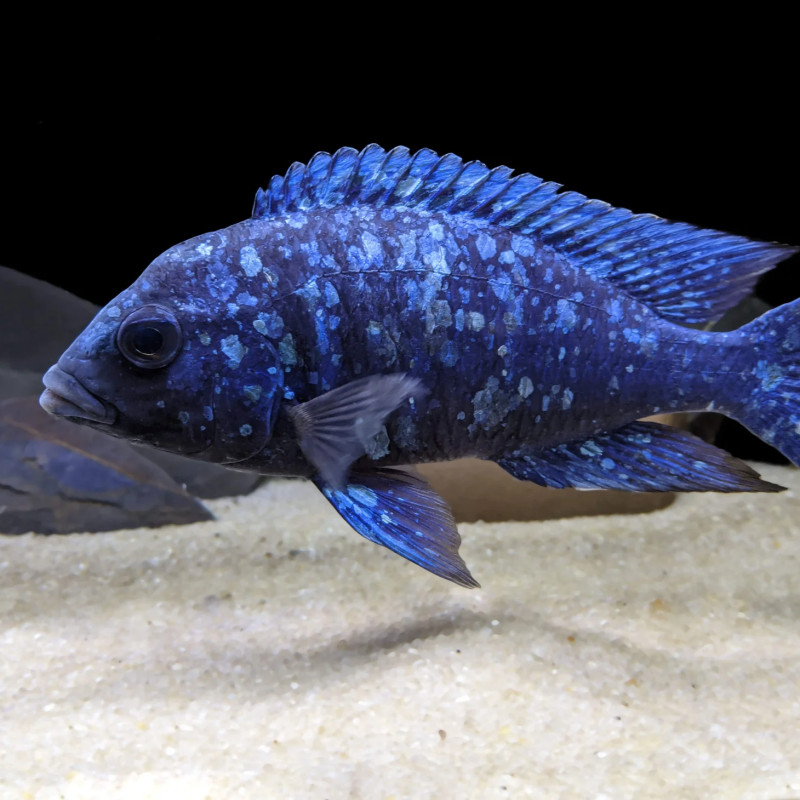More info
Placidochromis phenochilus "Lupingu"
Common Name
Placidochromis Phenochilus "Lupingu"
Classification
Family: Cichlidae
Subfamily: Pseudocrenilabrinae
Distribution
Endemic to Lake Malawi, specifically found in the Lupingu region.
Habitat
Inhabits rocky zones and areas with aquatic vegetation at various depths.
Maximum Standard Length
A mature male can reach between 17 to 23 cm. Females are a bit smaller, around 15 to 18 cm.
Aquarium Size
A small group would need a tank measuring at least 150 cm x 50 cm x 60 cm – 450 liters.
Maintenance
Keep it in an aquarium with lots of rocks, forming caves and crevices. Use sand as substrate and include some hardy aquatic plants. Filtration should be excellent, and tank maintenance should be regular to ensure good water quality.
Water Conditions
Temperature: 24-28°C
pH: 7.5-8.5
Hardness: 10-25°H
Diet
Omnivore, feeding on small invertebrates, algae, and plant matter. In aquaria, it can be fed a variety of dry, frozen, and live foods, including algae-based foods and vegetable supplements.
Behavior and Compatibility
Relatively peaceful for a Lake Malawi cichlid, it can be kept with other species of similar behavior. Avoid tankmates that are too aggressive or overly territorial.
Males can be territorial with each other, but it is possible to keep multiple males in a group, as they are less aggressive towards each other than other Malawi cichlids.
Sexual Dimorphism
Males are larger and exhibit more intense coloration than females. Adult males develop a pattern of bright metallic blue spots, while females remain more subdued, retaining the juvenile coloration.
Reproduction
It is a maternal mouthbrooder. The male chooses and cleans a spawning site and attracts females with color displays. The female lays the eggs and collects them in her mouth after fertilization. The eggs are incubated in the female's mouth for about 3 weeks. After hatching, the fry can be fed Artemia nauplii and crushed dry foods.
Notes
Placidochromis phenochilus "Lupingu" is valued in aquaria for its spectacular coloration and relatively peaceful behavior. It is an excellent choice for aquarists who want an impressive but less aggressive Lake Malawi cichlid. It can be kept with Aulonocaras, Copadichromis, Sciaenochromis, Protomelas, Lethrinops, and Fossorochromis, among other examples.
Illustrative photo.










